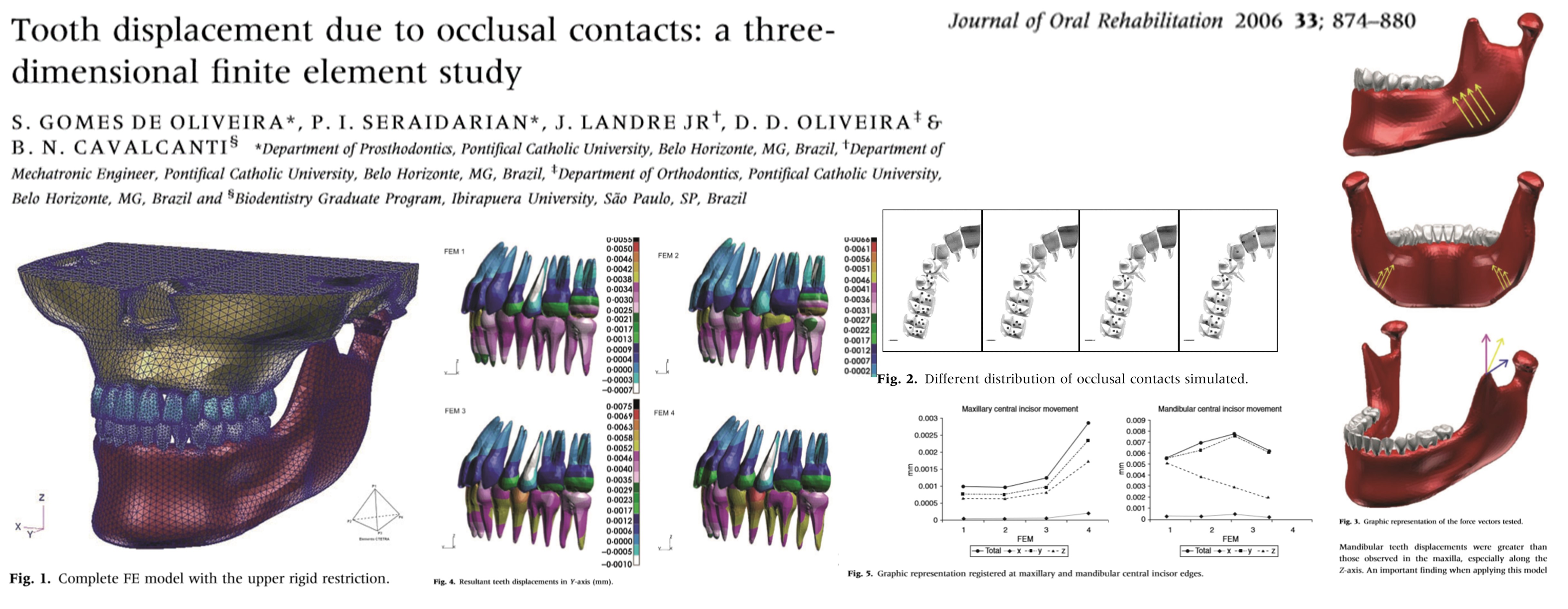Tooth displacement due to occlusal contacts.
Tooth displacement due to occlusal contacts: a three-dimensional finite element study.Gomes de Oliveira S, Seraidarian PI, Landre J Jr, Oliveira DD, Cavalcanti BN. J Oral Rehabil. 2006 Dec;33(12):874-80.
Occlusal contacts in humans occur on inclined planes and have a great in?uence on maintaining tooth position and mandibular stability. When the occlusal system balance is disturbed some negative effects may take place. For example, muscular alterations, parafunctional habits, dental mobility, occlusal trauma, tooth migration and mandibular incisor crowding might occur. This last clinical condition is sometimes attributed to late mandibular growth, rebound of interdental ?bres or even to unerupted or erupting third molars.The use of the Finite Element Method (FE) is an appropriate way to study occlusal forces and tooth movement. The purpose of this study was to evaluate the effects of different occlusal contact patterns on tooth displacement in an adult dentition using a three-dimensional FE model of a human maxilla and mandible. Initially, images of a computerized tomography scan were redrawn in a computer program. Four occlusal patterns were tested:
FEM 1 – standard occlusal contacts;
FEM 2 – removal of mesial marginal and mesial tripoidism contacts;
FEM 3 – removal of distal marginal and distal tripoidism contacts;
FEM 4 – similar to FEM 3 with added contacts between upper and lower incisors.
The three-dimensional FEMs were submitted to static occlusal load tests to simulate the action of the muscles responsible for the mandibular elevation: masseter, temporal and lateral pterygoid muscles. These forces were applied at the FEM nodes representing the areas of anatomical insertion of theses muscles and the force vectors followed the muscle ?bers path. No muscular activity changes were simulated. FEM 4 data showed the largest degrees of displacements among all simulations tested. Despite having signi?cant lower incisor displacements, the results were even more remarkable when analysing the behaviour of the upper incisors antero-posteriorly. The only variable changed in this study was the point of force application by altering the occlusal contacts. Since these modi?cations simulated small clinical changes, the results may demonstrate the relevance of occlusal equilibrium on tooth position stability. In addition, the graphic representation of tooth displacements in all three planes of space presented in this study help to elucidate the effects of the resultant vectors caused by changing the dental contacts. Although the FEM loading was instantaneous (and dynamic stresses would undoubtedly be more complicated), the results of this study clearly showed that small alterations in occlusal contacts commonly observed in prosthetic, orthodontic or restorative treatments could disrupt the balance of the occlusal system.

